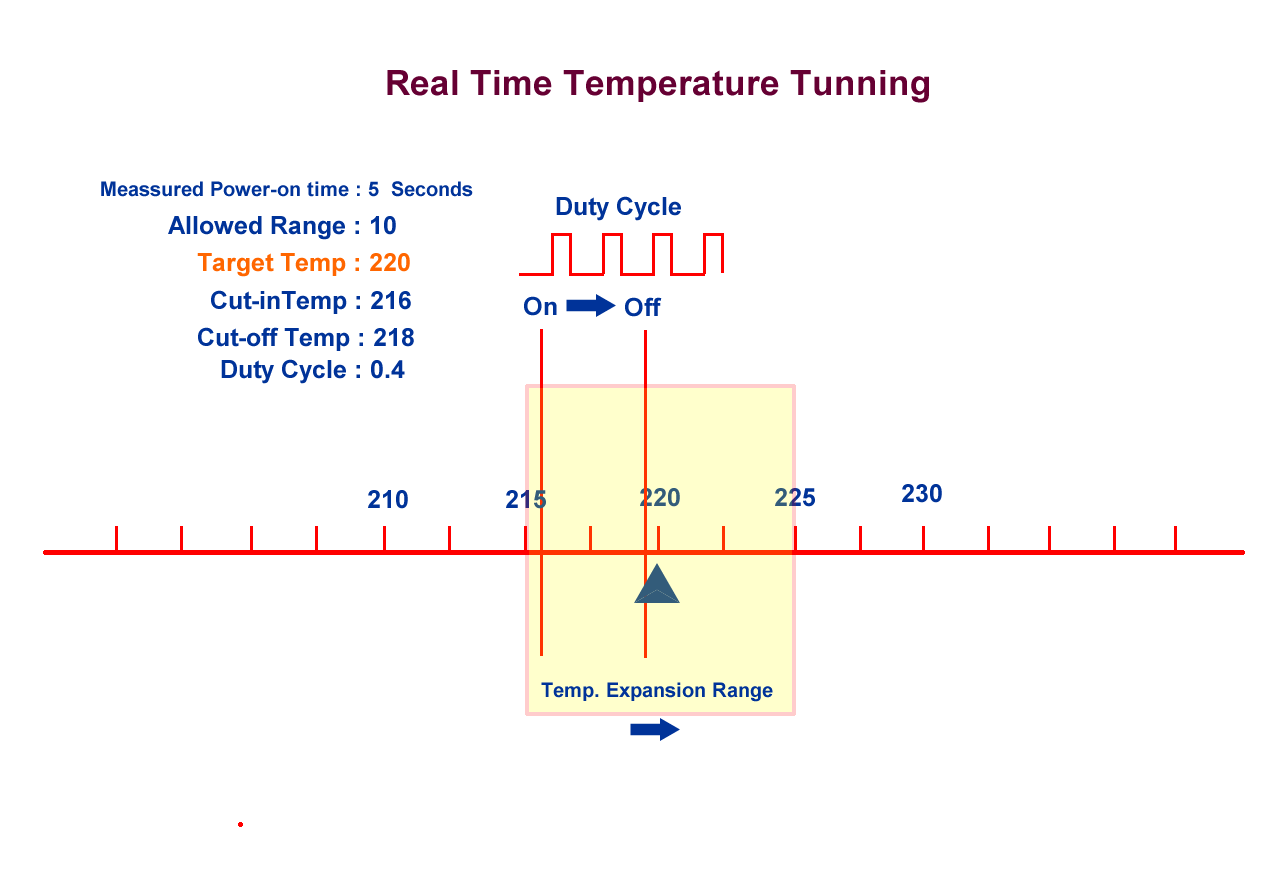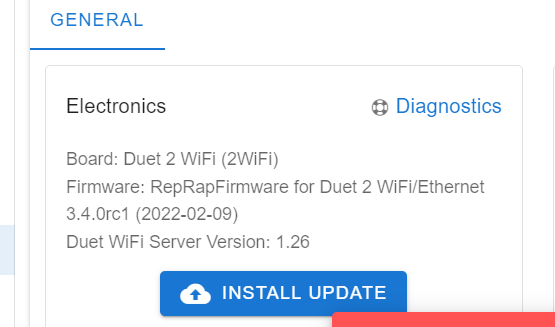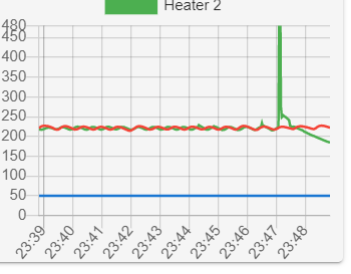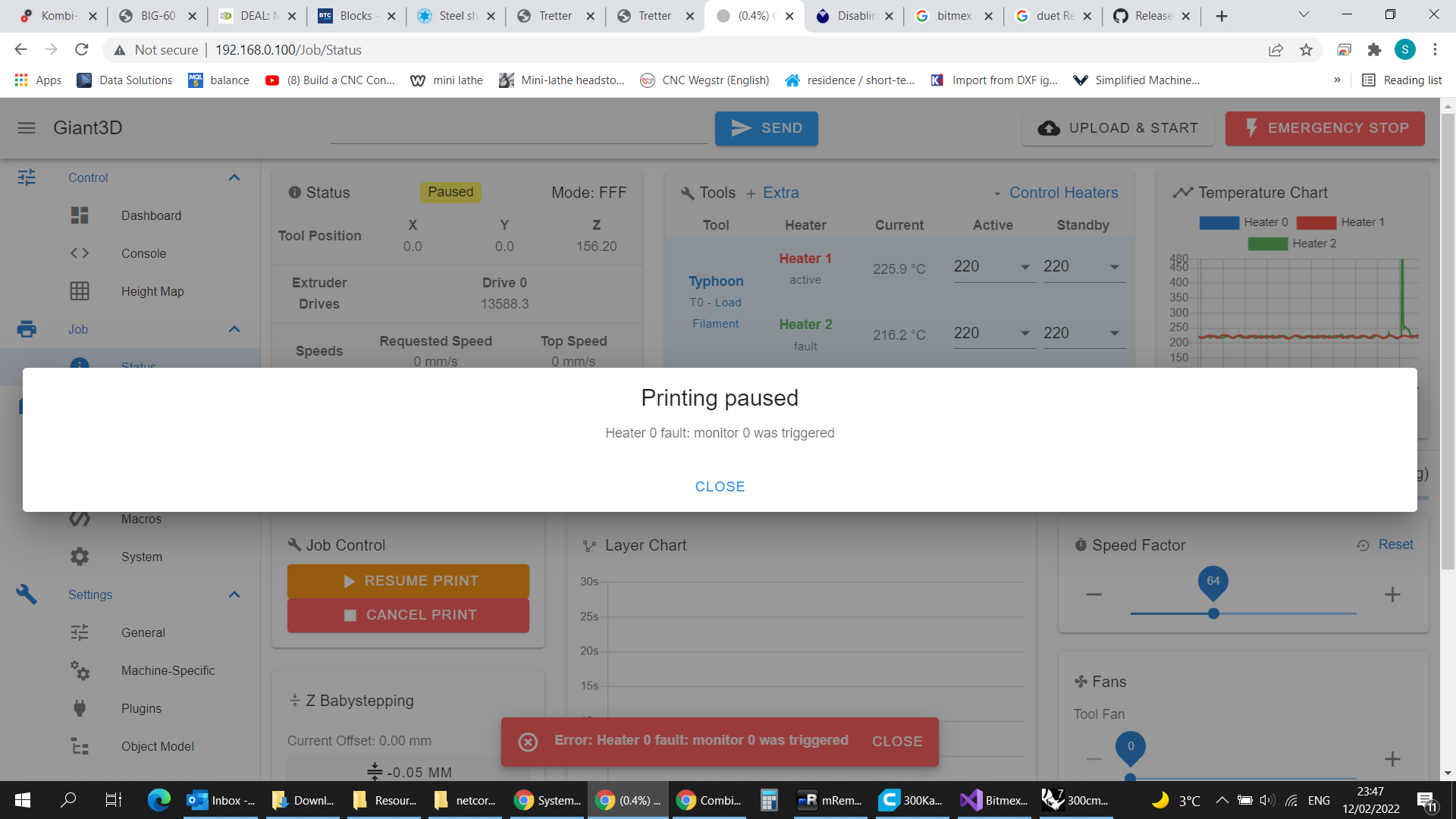Disabling Heater Fault
-
I have installed another new hotend smaller diameter,
However this time H1 could not be calibrated at all. It took 3-4 hours to see the failed result. I think this time is not a technical issue. Somehow H2 is seemed okay. But, M303 H1 S220 result with failure:Warning: heater behaviour was not consistent during tuning Warning: Auto tune of heater 1 failed due to bad curve fit (R=5.433 K=4.650:0.000 D=14.85)These autotune things seem not really effective in my case.
Any suggestion?
-
@sozkan said in Disabling Heater Fault:
These autotune things seem not really effective in my case.
Any suggestion?
Having seen those pictures, it is clear that the Dyze heater elements are unlike the usual cartridge heaters that the majority of people use. Perhaps there is some characteristic about their design which means the normal PID tuning algorithms will not work well. Have you contacted Dyze designs and asked them if they have any suggestions or recommendations?
-
@deckingman said in Disabling Heater Fault:
@sozkan said in Disabling Heater Fault:
These autotune things seem not really effective in my case.
Any suggestion?
Having seen those pictures, it is clear that the Dyze heater elements are unlike the usual cartridge heaters that the majority of people use. Perhaps there is some characteristic about their design which means the normal PID tuning algorithms will not work well. Have you contacted Dyze designs and asked them if they have any suggestions or recommendations?
Yes, clearly they say they don"t provide software support and suggested PID tunning and find a solution here!
However, I still believe there is another way to run. But, not a time-dependent algorithm. That's one of the problems! Since we have sensors and all advanced PWM things what's the point of PID tuning checking for death and uptime! Even the tuning was working on pause days when started printing failed. It is fact that plastics flow even act like cooling and ruin the PID tuning setup and safety margins start activates! It seems it is not seen on hobby-grade printers.
I start thinking to develop an external controller independent from the Duet hardware for this hotend. For that purpose, An extra Arduino controller, a new algorithm just for heater controlling purposes!
1- if the temperature of each individual heater is below the threshold, keep powering the heater until the cut-off threshold temp.
2- temperature start expands, it does not matter in 1 second or 100 seconds.
3- If the temperature rises more than expected, the decision for duty cycle or decrease the cut-off threshold temperature slightly. Which could be even real-time tuning!Isn't that possible with the present controller?
-
Isn't that possible with an algorithm to play for real-time tuning?
like measured time 5 seconds at present or during the printing:- Within the cut-in and cut-off, if more than 5 seconds simply duty cycle activates for longer duty until continues power.
- if heating is shorter than 5 seconds, the duty cycle lowers the power.
- If the temperature is out of the limit is due to the thermal expansions, lower the duty or cut-off thresholds.

It seems simple and more functioning to me. Measured time is even completely unnecessary. if the temperature goes out of the limit, simply auto-decrease the duty cycle.
-
@sozkan What you describe is close to how bang-bang mode works. So you could try that instead of using PID (change the "B" parameter). It might be a better option for that particular hot end.
But IMO Dyze design are ducking their responsibilities by producing a device and not suggesting how to control it. The PID algorithm works fine for every other hot end - even those with multiple heaters ( as in my case using two heat zones, each with an 80 watt heater cartridge).
-
@deckingman said in Disabling Heater Fault:
@sozkan What you describe is close to how bang-bang mode works. So you could try that instead of using PID (change the "B" parameter). It might be a better option for that particular hot end.
But IMO Dyze design are ducking their responsibilities by producing a device and not suggesting how to control it. The PID algorithm works fine for every other hot end - even those with multiple heaters ( as in my case using two heat zones, each with an 80 watt heater cartridge).
Hi, thank you for the all suggestions. I am very grateful. I simply change to B1 and a bit play with PWM. Now it works much more stable. Thankfully, the problem is solved now.
By the way, the 2.5 mm of dyze hot end seems cracked due to my last year's hard start trial. They say the resin-like leakage seems like occurred from the crack. Therefore, they suggest for return for repair.
-
Hello All,
I just wanted to share the successful result:
The only target for me right now is filament detection. 5 kg filament consumed so fast
 with no sense.
with no sense. -
Hello again,
During the 30 hours printing again fault again. it says Heater 0 fault, but a fault on Heater 1. Temperature drop to 203 at Heater 1 with no sense.
I don't understand, The fault detection can sense temperature from the sensor! The algorithm cannot activate power on time!Isn't it possible to re-test and continue printing later?

-
@sozkan said in Disabling Heater Fault:
RepRapFirmware
Hi,
This is the latest firmware. I have just updated.

Heater 2 strangely spiked 480 celsius. have noticed this on long moves. Is this not sensing sensors during the long gCode interpretation?

-
@sozkan That rapid transient spike looks like a wiring issue or bad connection somewhere. There is no way that the hot end could heat and cool that rapidly so the problem must be with the temperature sensor circuit. It's probably a bad crimp or wire which makes and breaks connection as the carriage moves around.
-
@sozkan hi! could you post your Typhoon configs?

-
Hi @sozkan !
Could you post your Typhoon config?
We are using the Duet2/Eth board with PT100 addon board and are struggling with the Typhoon.
Any help would be much appreciated. -
@djstree It's probably better to create a new thread where you describe your problem. I assume you've already checked out automatic heater tuning.